Another icon from the list of Alocasia superstars is the famous Alocasia Dragon Scale. The dazzling leathery green foliage contrasts the intricate darker venation pattern resembling dragon scales, making this Alocasia one of a kind and a sure hit for plant lovers.
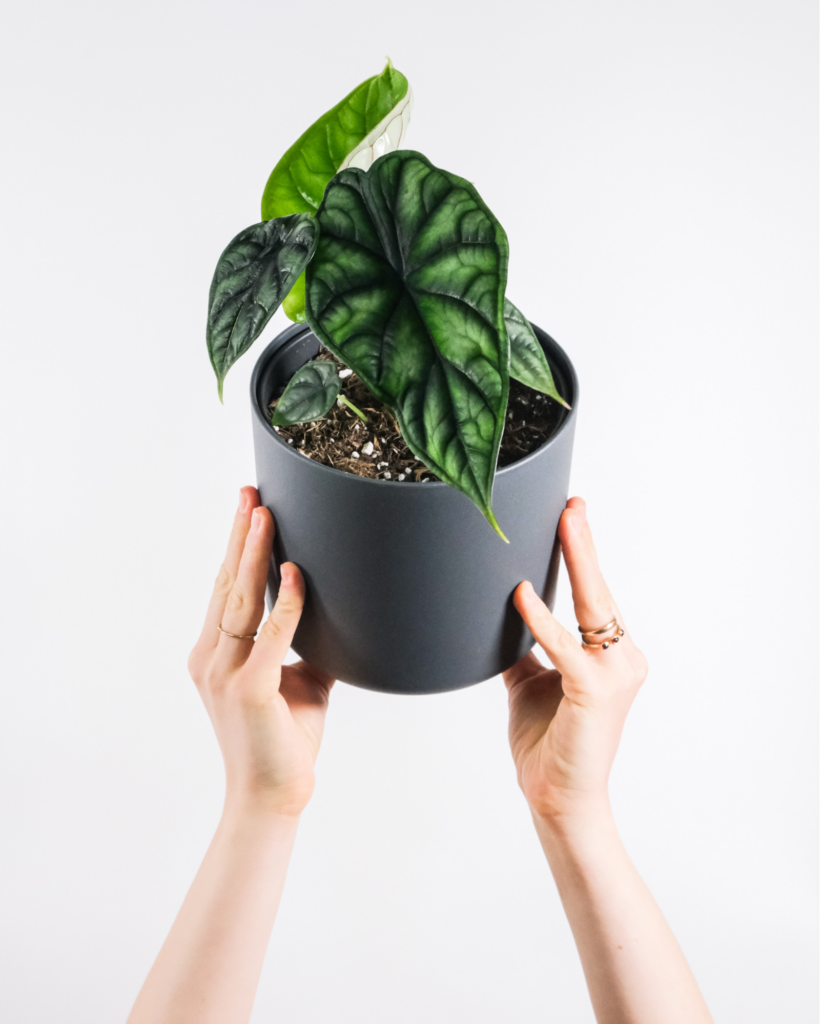
This unique Alocasia from the tropical forests will make any space ravishing and premium. Wanna know more about this prized decorative plant? Here’s the ultimate information and care guide that you need to tame this fascinating plant.
Alocasia Dragon Scale Profile
General Information
Alocasia baginda ‘Dragon Scale’ is one of the most popular Alocasias worldwide. The iconic plant is from Borneo in the Malay Archipelago, home to many other exotic tropicals. The Dragon Scale is one of the varieties of Alocasia baginda. The others are “Alocasia Pink Dragon” and “Alocasia Silver Dragon”. Dragon Scale is a rare Alocasia.
Etymology
The common name “Dragon Scale” refers to the unique character of its foliage. The shade of green on its leaf surface and the distinguishing veins closely resembles a dragon’s backbone. This unique characteristic can also be seen on other dragon scale plant varieties such as Alocasia Silver Dragon and Pink Dragon.
Flowering
The inflorescence of the Alocasia Dragon Scale is similar to Anthuriums. It is called a spadix, consisting of white flowers and a purple spathe, which resembles a leaf. However, the dragon scale’s leaves are the ones most sought-after rather than its flowers.
Season of Interest and Purchasing
Alocasia Dragon Scale is a typical garden or house plant. It is available commercially the whole year. However, it is most abundant during spring and summer, its growing season.
Growth
Dragon scale is a fast-growing Alocasia. It is reported to grow from 3 ft. to a maximum of 6 ft. when given proper care and nutrition. It is common for Dragon Scale to achieve its maximum height in the wild.
Alocasia baginda ‘Dragon Scale’ Overview
| Scientific name | Alocasia baginda ‘Dragon Scale’ |
| Common name/s | Dragon Scale |
| Family | Araceae |
| Growth Habit | Herbaceous |
| Height and Spread | 3 – 6 ft. in height, spread 12-18 inches |
| Classification based on life cycle | Perennial |
| Origin and Distribution | Borneo. Commercially available worldwide |
| Climate Zone | Generally warmer climate |
| USDA Plant Hardiness Zone | USDA Zone 9 – 11 |
| Color | Dark green with darker venation |
RELATED: Alocasia Nebula: All the Must-Have Care, Propagation and Watering Guide
Care Tips
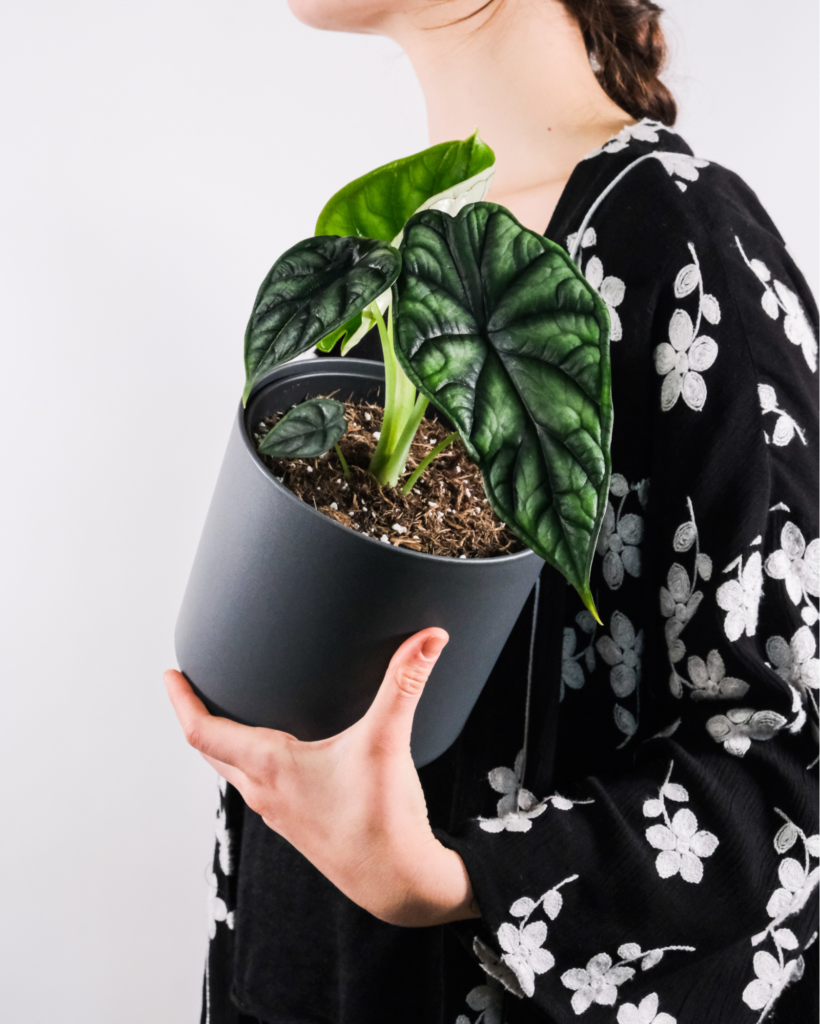
Light Requirement
Dragon Scale Alocasia thrives in bright, indirect light exposure. Like all Alocasias, direct sunlight is detrimental to the plant as it causes burns to the foliage. On the other hand, full shade can also trigger the plant to undergo dormancy. A good amount of bright light is needed for this plant to grow well. It is also resistant to partial shade locations.
When this is put indoors, avoid a direct sunny window. Filtered sunlight is still recommended for this plant. A sheer curtain may provide the perfect conditions for Dragon Scale. A reminder that too little light and too much direct light are detrimental to the plant. Bright indirect sunlight is the best.
Temperature Requirement
Since this plant is native to Southeast Asia, generally, it loves warmer conditions. Dragon Scale grows well between 55 to 80 degrees Fahrenheit.
However, this thick-foliaged Alocasia detests temperatures below 60 degrees Fahrenheit. At this temperature, the plant undergoes dormancy. Better to put it away on window sills during frosty winters. Moreso, hot or cold drafts and direct contact with appliances such as heaters, fans, and air conditioners will harm the plant.
RELATED: Alocasia Sarian: Ultimate Care Guide, Propagation, and More
Water Requirement
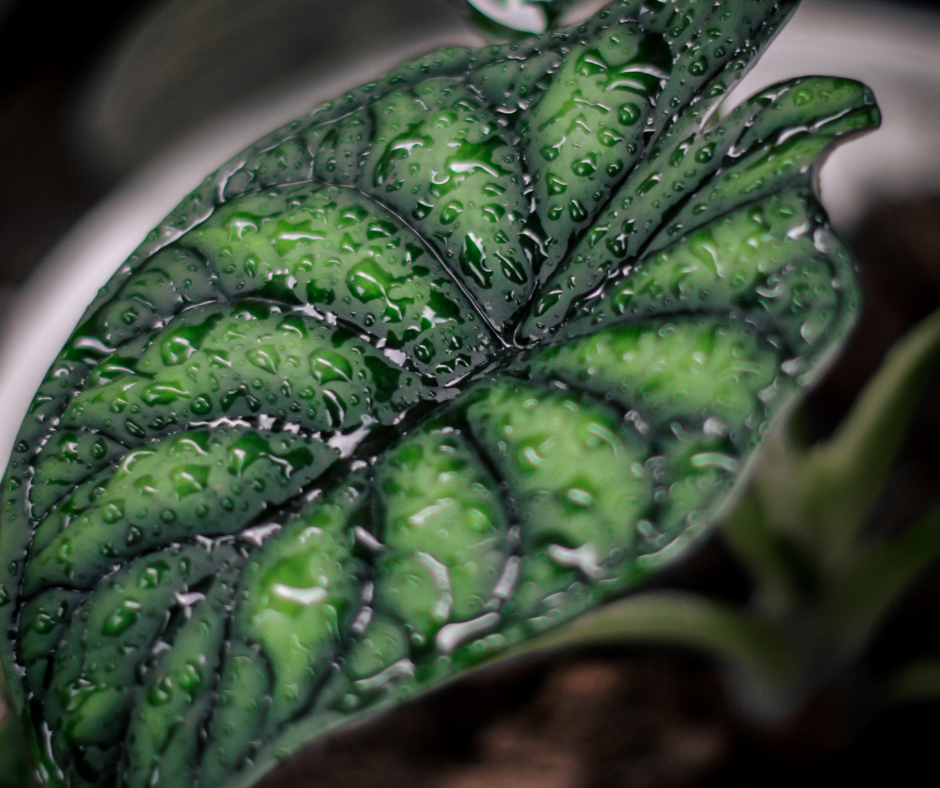
Frequent watering is needed by this Alocasia, being a native to rainforests. A watering frequency of two to three times weekly during summers is recommended. This frequency is lowered to once a week during winters to avoid over-watering. You can use tap water to water this plant.
As a rule, always check the topsoil if it’s still moist. The top three inches of soil must be completely dry before watering to avoid root rot. A soggy growing medium will lead to more plant problems as this plant has a low tolerance to overly moist conditions.
Humidity Requirement
Dragon Scale needs a relatively humid environment to be happy. High humidity is achieved by putting a pebble tray below the pot, bringing in a humidifier, or frequently misting, especially during dry seasons. However, misting must be done with caution as an excess of it can attract fungi and other pests.
Make sure to place your plant in an environment with good airflow. Dry air causes low humidity.
Soil Requirement
Alocasias, in general, prefer well-draining soil that is moist and has good aeration. A standard aroid mix or jungle mix that is chunky suits the needs of Dragon Scale. Note that rocky or sandy soil does not do wonders to this plant. Sandy soils do not provide good hold to plants, plus it quickly dries up.
Fertilizer Requirement
The plant dwells well with the addition of a slow-release fertilizer. Water-based fertilizers are also known to be suitable for the plant. However, it is not recommended to use low-quality fertilizers because of the cheap salt content that could accumulate in the soil and harm the plant.
In addition, Brown, crispy leaf tips and dying leaves are symptoms of incorrect usage of fertilizers.A mild organic fertilizer can be fed to Dragon Scale twice a week in the growing season. No fertilization is needed during winters when it undergoes dormancy.
Space Requirement
A minimum space requirement is only needed for Dragon Scale to flourish. It loves getting root bound to pots or any space they are in.
Growing and Planting Tips
Propagation
Dragon Scale Alocasias are propagated using two methods; either by (1) rhizome division or (2) by corms. The best time to propagate this plant is during spring and summer, no matter the method.
1. Rhizome Division
Using this method, remove the stems from the mother plant or the pups that sprout around. You can remove them using a sharp tool such as a blade or a knife. Be careful not to damage the root system of the pups. Put the pups or the separated stems into a proper potting mix and place them in a conducive environment. Keep the air humid level at optimum.
2. By Corms
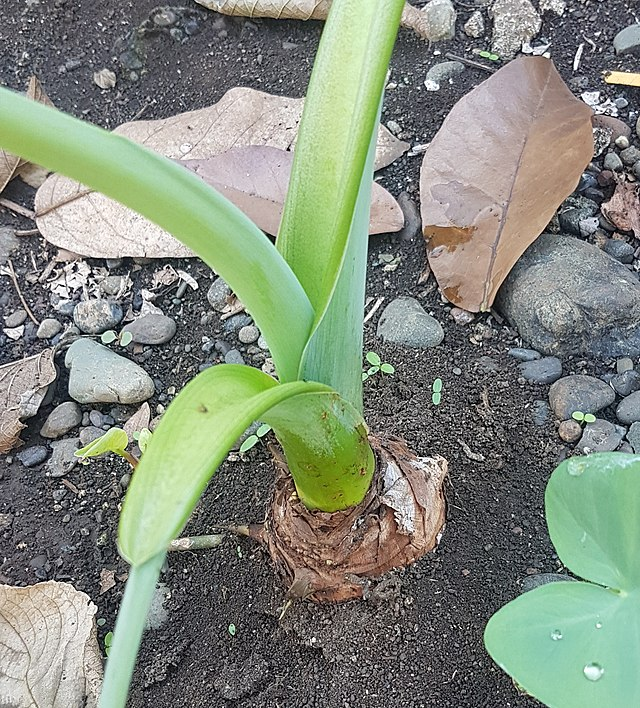
A corm is similar to a bulb. It is an organ used by plants to store water and nutrients for detrimental seasons. Not all plants have corms. However, for Alocasias, you can use these corms for propagation.
Gently remove the mother plant by loosening up the soil. Search for small, brown clumps in the underground stems. Using a sharp tool, cut a corm away from the main plant. Be careful not to damage the roots. Return the mature plant to its soil and plant the corms in the recommended growth zone in the excellent well-draining potting mix.
Please do not use all the corms for propagation since they are sources of nutrients and water for the mature plant when it undergoes dormancy. New plants emerge in a couple of days.
Pruning
It is normal to lose leaves now and then, especially when new growth is sprouting. Dropping leaves are also observed when the Dragon Scale goes to dormancy. Remove the dead leaves. Reminder to not pull the plant too hard. If you suspect disease caused by a fungus, remove all affected leaves immediately.
Potting and Repotting
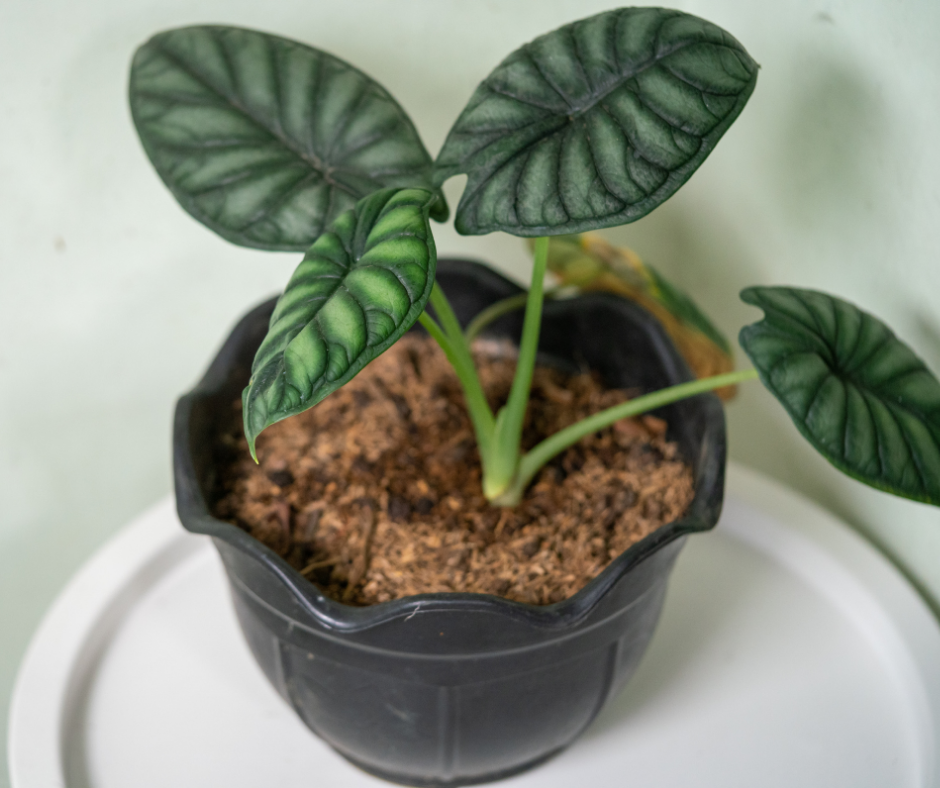
A small pot with good drainage is enough for the Dragon Scale. Balanced perlite, peat moss, orchid mix, and chopped coco coir are recommended for potting mixtures. This mixture makes the medium chunk for proper aeration and drainage, suitable for this Alocasia.
Re-potting of Dragon Scale ultimately depends on the environmental conditions and the care the plant is receiving. Generally, the plant needs re-potting every other year since it likes to be root bound. Only re-pot alocasia dragon scale plant when it outgrows its pot. It is recommended to re-pot during the growing season, not during its dormancy period.
RELATED: Alocasia Maharani: Helpful Plant Information and Care Guide For This Rare Beauty
Alocasia baginda ‘ Dragon Scale’ Care
| Light | Bright indirect |
| Temperature | 18-25 degrees Celsius |
| Water | Once a week, increased in summer, decreased in winter |
| Soil | Chunky, well-draining |
| Fertilization | Once a month |
| Space | Minimal space |
| Propagation | Via rhizome division and corms |
| Blooming | Rarely blooms, enough sunlight and maturity needed |
| Pruning | When needed, removal of damaged and decaying leaves |
| Potting | Regular potting mix, use of perlite, coco coir, and orchid mix recommended |
Problems and Troubleshooting
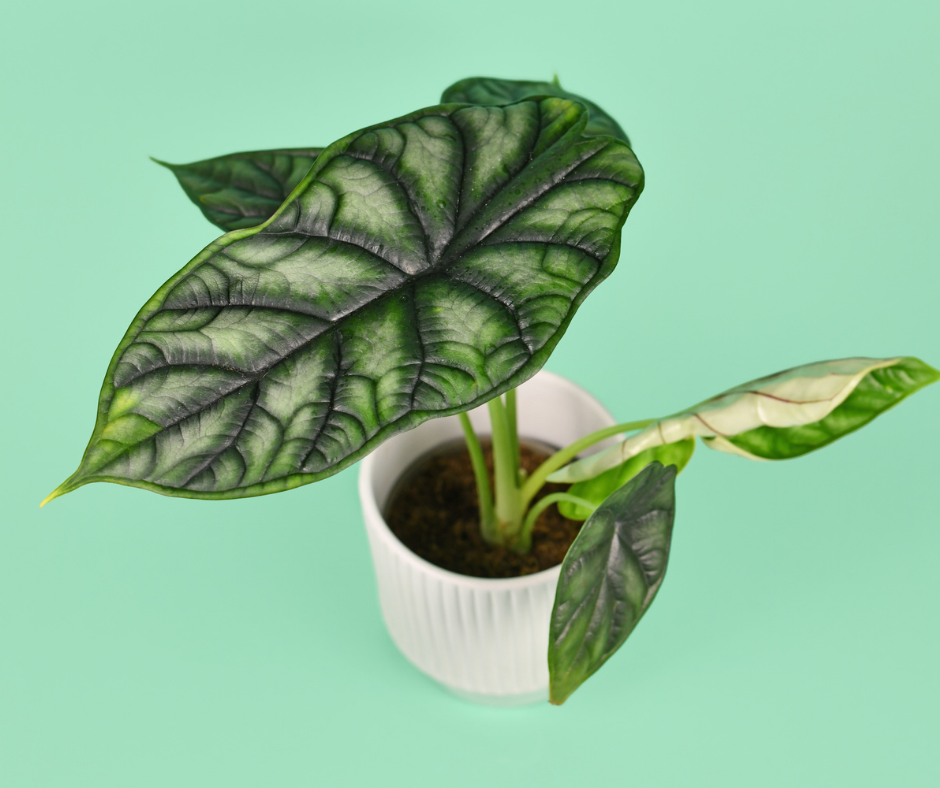
Overwatering
The drooping of Dragon Scale leaves is commonly caused by overwatering. Some symptoms of excess water include brown leaf spots and yellow leaves, leaf surface edema, and root rotting.
Overwatering problems can easily be fixed by ensuring a proper watering schedule for the plant. Check if the light is sufficient and use a well-draining potting mix. If soil easily clogs, it could lead to Dragon Scale problems.
Underwatering
Underwatered Alocasias are characterized by crispy, brown leaf tips and edges. The plant-soil also tends to be cracked and dry when there is no sufficient water. Rectify the watering schedule to fix this problem. If the dragon scale plant already outgrows the entire pot, re-pot it to a larger pot size to retain the moisture of the potting soil.
Do not let the soil dry out for days. Keep the soil moist to avoid underwatering. Avoid putting the plant to direct sunlight.
Nutrient Deficiency
The typical nutrient deficiency symptoms in most plants are also observed in Alocasia Dragon Scale. Grey coloration, yellow leaves, an appearance of a purplish hue, burnt edges, and brown tips are the everyday observations in nutrient-deficient plants. Some observations include leaf holes, change in leaf texture and stunted root system, and new leaves.
The only way to mitigate this problem is to ensure appropriately balanced fertilizer is used and given at suitable schedules. Check the strength of the fertilizer and dilute it to half to avoid damaging the plant. The soil’s acidity should also be optimized to help nutrient uptake.
Flowering Problems
The flowering of all Alocasias is not reliable as they rarely flower. However, sufficient bright indirect light and proper care are needed to ensure that your plant will flower successfully.
Pests and Diseases
Alocasia baginda ‘ Dragon Scale’ Pests and Diseases
| Common Pests/Diseases | Symptoms | Treatment and Prevention |
Common diseases include leaf spotting, root rotting, fungal diseases, stem and crown rotting. | Black or dark brown spots with yellow rim around | Do not overwater and maintain proper humidity levels. Extremely wet environment enhances fungal growth.Proper ventilation is necessary. Removal of infected plant parts to avoid spreading of disease. |
| Common pests include mealybugs, spider mites, and scales | Visible on plant surface | Spray warm soapy water once a month. Commercially available insecticides and neem oil can also be used. |
Problems with People and Animals
Toxicity
Dragon Scales are not pet-friendly or child-friendly additions to homes or gardens. This tropical plant contains calcium oxalate crystals that are highly hazardous when ingested, making it a toxic plant. In addition, irritation to the throat and mouth and swelling can occur when eaten. Therefore, extreme caution must be done, especially when kids and pets are around.
Alocasia Plants Meaning and Symbolism
Alocasias have great symbolism attached to their nature. For example, it was said that the plant that grew upwards and reached heaven in the classic fairytale Jack and The Beanstalk was an alocasia. The Western and Eastern versions of the tale referenced alocasias.
Due to this attribution, Alocasias stands for taking risks and seizing opportunities. Therefore, they are best given to people as a lucky charm for their new ventures.
Alocasia Sarian Symbolism and Meaning
| General Meaning | “plant that grows up to heavens” |
| Symbolism | Risk taking and seizing opportunities |
| Cultural Significance | Attribution to the Jack and the Beanstalk fairytale |
Landscaping and Gardening Ideas
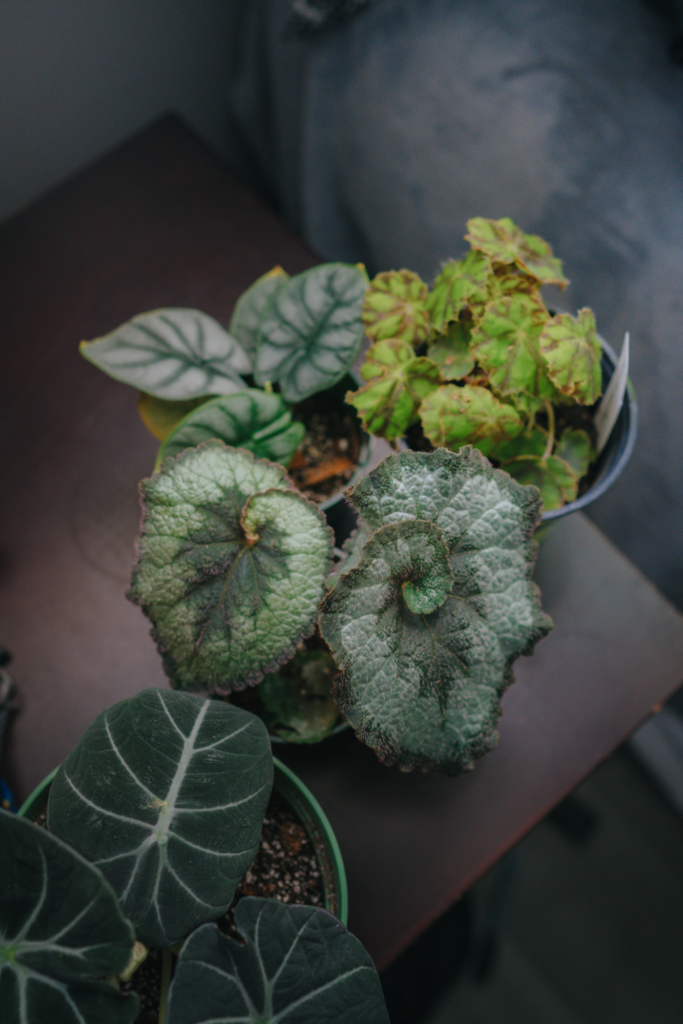
Companion Plants
Adding plants with heart-shaped leaves to spaces will give you a tropical, ethereal vibe. The Dragon Scale Alocasia is a good companion plant to other Alocasia plants such as Alocasia reginula Black Velvet because they share the same necessary attention.
Caladiums, Xanthosomas, and Colocasia, will complement Dragon Scale in any space. Furthermore, other plants like Scheffleras, Canna Lilies, Dieffenbachias, Coleus, and Ornamental Bananas are also good companion plants to Alocasia baginda. The addition of these tropical plants will amplify your landscapes’ equatorial, exotic vibe.
Landscaping Ideas
With its mesmerizing, intricate foliage, Dragon Scale is a perfect addition to any corner or space. The exotic plant will turn a bland room into a fascinating urban jungle pad. Its dark green foliage and even darker venation pattern complement almost all plants. Best to add plants with purplish hues and lighter shade to provide contrast.
| What to plant with | Colocasia, Caladiums, Alocasias, Xanthosomas, Coleus, Canna Lilies, Ornamental Bananas, Ficus, Dieffenbachia, Schefflera |
| What NOT to plant with | Basically nothing |
Conclusion
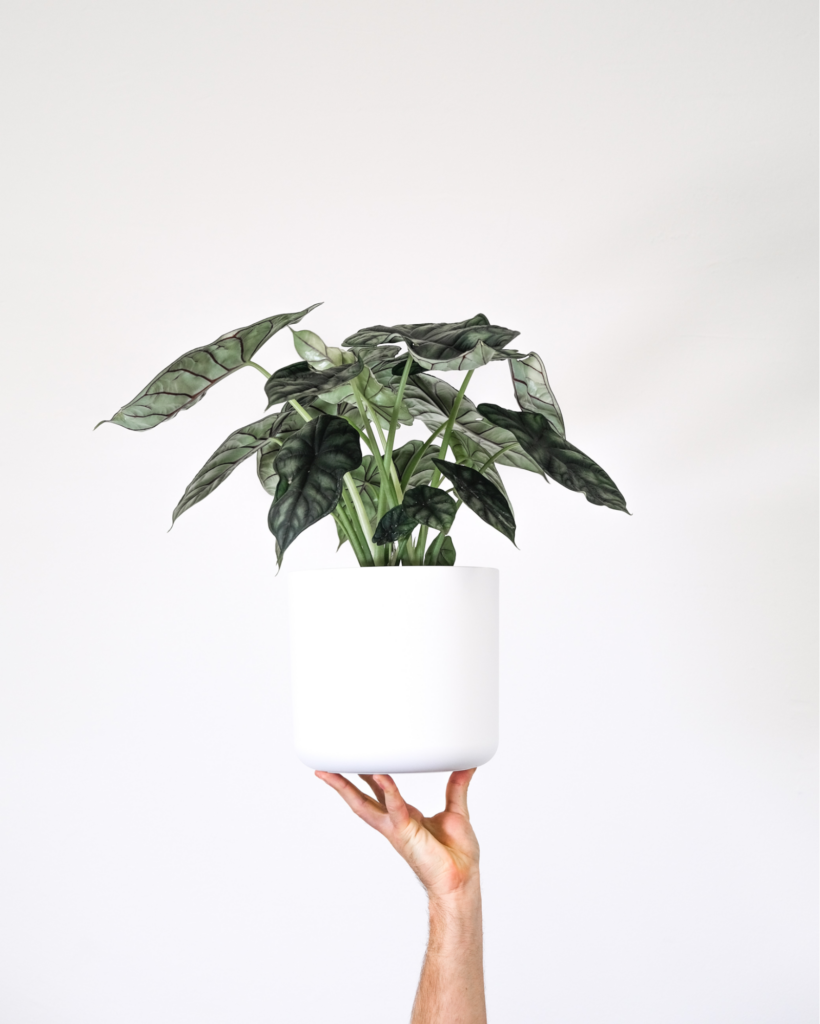
Alocasia baginda Dragon Scale is a plant that is something out of fantasy. Its leathery green foliage plus its darker intricate venation pattern make Dragon Scale a premium decorative plant, something that will surely be a conversation starter. This plant may have specific requirements, but Alocasia Dragon Scale care is generally an easy one to follow.
Frequently Asked Questions
Is the Alocasia Dragon Scale rare?
Yes. This Alocasia is a rare variety of Alocasia baginda. Other rare varieties include the Pink Dragon and Silver Dragon.
Why is my Dragon Scale yellow?
Yellowing leaves of Alocasias may be due to overwatering and nutrient deficiency. Therefore, to fix this problem, check your watering schedule. Make sure to water only when the topsoil is completely dry. Therefore, avoid using easily waterlogged soil and use well-draining soil. Also, using proper fertilizer strength and frequency once a month of fertilization is enough.
Do Alocasia Dragon Scales go dormant?
Yes. Like all Alocasias, Dragon Scales go dormant during the winter season.
Why is my Alocasia Dragon Scale dying?
Your Dragon Scale may be dying due to improper care and nutrition. Alocasia Dragon Scale care is relatively easy than other alocasias. Make sure to meet them accordingly. Thus, right potting mix, light, humidity, and watering should be given. Pot with drainage holes is also recommended.
Can you propagate the Alocasia Dragon Scale?
In fact, you can propagate Alocasia Dragon Scale plants via rhizome division or corms. Slice a piece of a corm or an underground rhizome and then plant it in a proper growing medium. In addition, make sure the right potting mix is in use to avoid direct light. Then, a new plant will emerge in a few days.
Did you like this Alocasia Dragon Scale article? Check out our other articles:
Snake Plant Roots: What To Look For In A Healthy Sansevieria Plant
Watering Snake Plants: How Often To Water and More Helpful Tips
Anthurium crystallinum: The Only Care, Propagation, and Watering Guide You Need







